By John Papadimitriou
Edited by Paulina Björk Kapsalis
Pylos, the largest natural port of the Peloponnese on the western flank of Messinia, was once the kingdom of Nestor, the legendary character in Homer’s “Iliad” and “Odyssey.” Yet the current location of this small town, which was built by French general Nicolas Joseph Maison in 1828, does not identify with ancient Pylos.
Today’s Pylos is built amphitheatrically in the Gulf of Navarino, just a short drive from Costa Navarino (20 minutes from Navarino Dunes and only 10 minutes from Navarino Bay and Navarino Hills), and makes for a delightful outing for the day. A walk along the picturesque harbor offers a lovely combination of beautiful scenery and a taste of the quaint local life in Messinia, with plenty of stores and options for a traditional meal or a coffee.
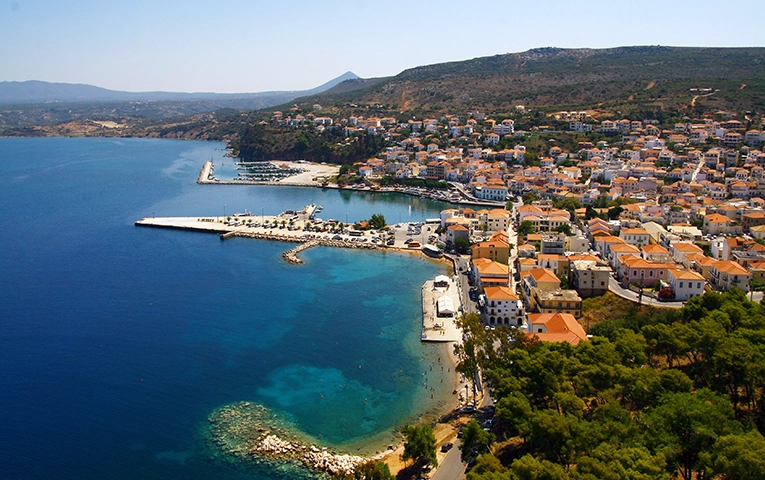
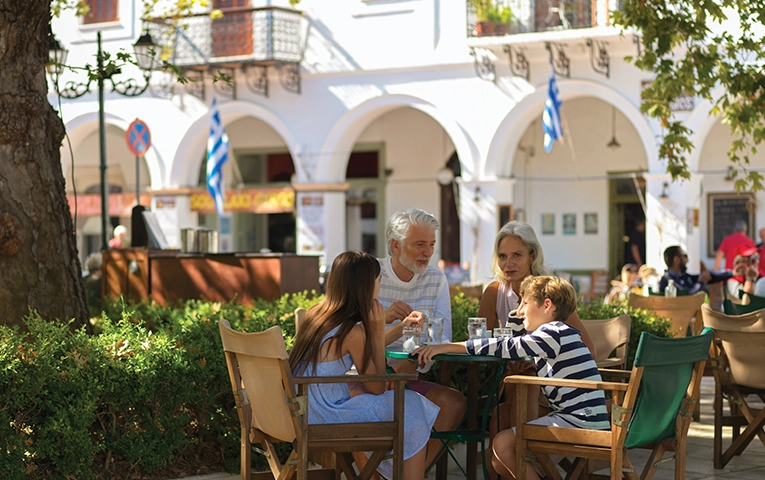
Yet history is present too. Pylos is where the battle of Navarino,the famed naval battle between the Allies and the Ottoman-Egyptian fleets took place in 1827, a decisive moment in the Greek War of Independence. Every year, on October 20th, a reenactment is staged in the port, but the battle is remembered all through the year. In the Three Admirals Square, below towering centenarian plane trees, you’ll spot the Monument of the Three Admirals, created by sculptor Thomas Thomopoulos. With depictions of the admirals who led the three fleets confronting the Turk-Egyptian fleet, Edward Codrington, Henri de Rigny, and Lodewijk van Heiden, the monument serves as a constant reminder of the battle. At its base, two cannons, one Ottoman and one Venetian, symbolize the civilizations that passed through here.
And there’s plenty of more sightseeing to be done:
Cultural walks
West of Pylos, built on a hill by the Ottomans in 1573, stands the Niokastro (New castle) Fortress with the gothic style Church of the Metamorfosi tou Sotiros (Transfiguration of the Savior), built by the Franks, and the Archaeological Museum located within its walls. The museum houses one of the oldest Linear B clay tablets yet discovered, from c. 1450 BC. Further north you will encounter Paleokastro (Old castle), the oldest castle in the region, built by the Franks in the 13th century on top of the fortifications of the ancient acropolis.
Other sights worth visiting are two sections of the Venetian Aqueduct, as well as the renovated house of four-time Olympic medalist Kostas Tsiklitiras, a local hero, which operates as a museum and houses a collection of paintings and objects owned by the philhellene René Puaux, and exhibits commemorating the Battle of Navarino.
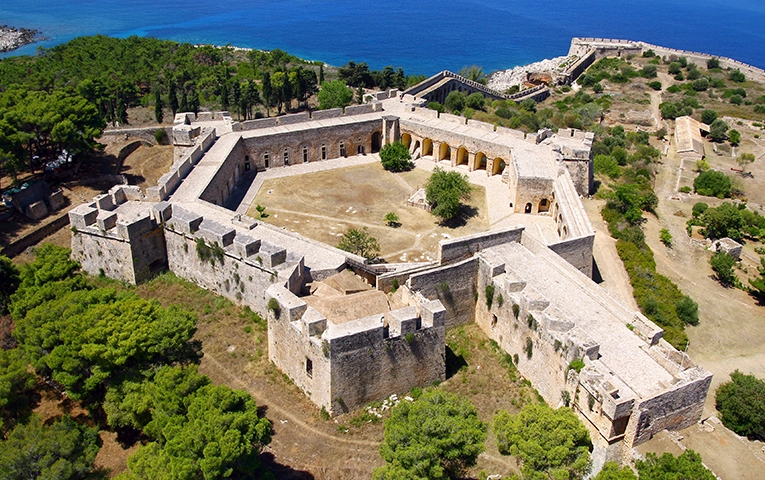
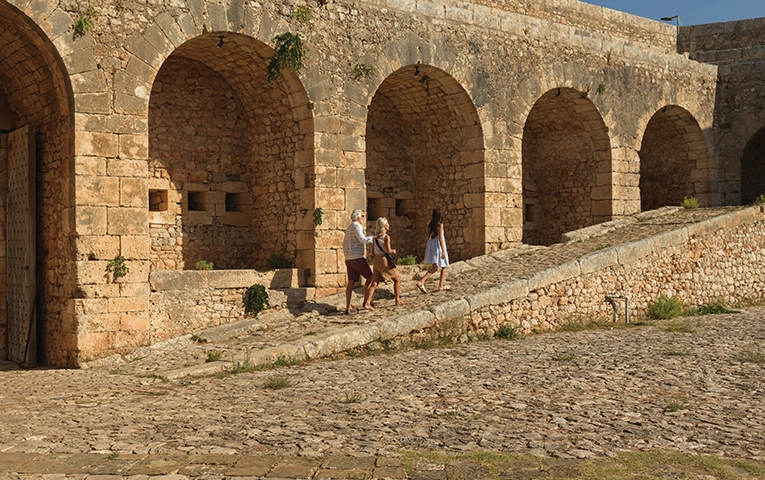
Other sights worth visiting are two sections of the Venetian Aqueduct, as well as the renovated house of four-time Olympic medalist Kostas Tsiklitiras, a local hero, which operates as a museum and houses a collection of paintings and objects owned by the philhellene René Puaux, and exhibits commemorating the Battle of Navarino.
Of course, the well-preserved Mycenaean Palace of Nestor, built on Eglianos Hill just 15 kilometers from Pylos, is one of the main draws of the area. Here, you can explore Bronze Age structures from the mid- to late-2nd millennium BC, such as living quarters, wine storerooms and workshops. The rectangular throne room stands out, and the adjacent bathroom, which features a well-preserved clay bathtub.
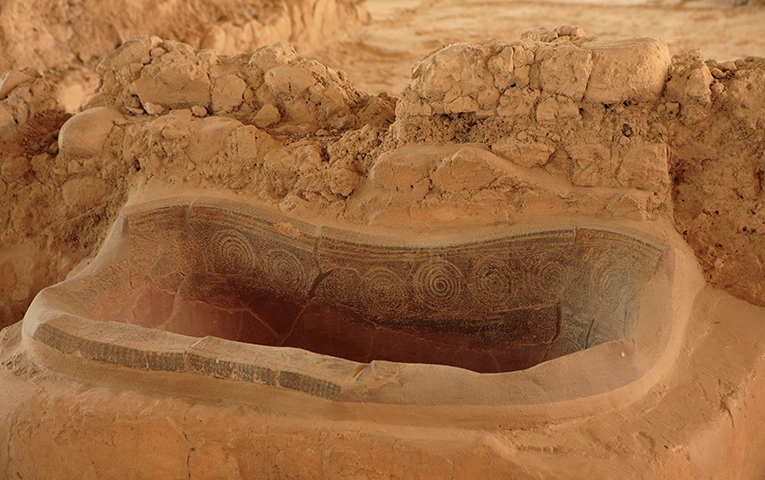
Sfaktiria island
A natural breakwater in Pylos, this long and narrow island facing the Ionian Sea is part of the Natura 2000 network. With a long history of conflict and war dating from antiquity, including a siege in 425 BC after the naval battle of Pylos in the Peloponnesian War, and the conquest by Ibrahim Pasha of Egypt in 1825, it boasts beaches with wonderful waters. Take the opportunity for a memorable sailing adventure in the storied waters off the coast of Messinia to explore the secrets of this ancient civilization’s crossroads.
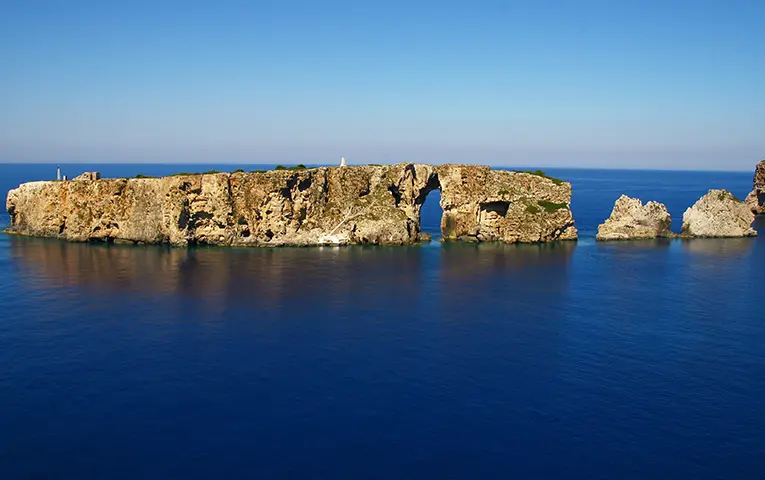
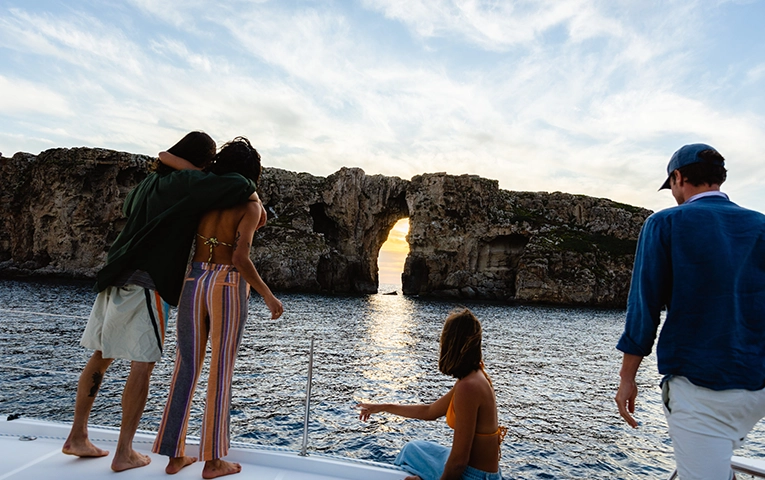
Natural beauty
A more famous part of the Natura 2000 network, right across the bay, Gialova lagoon is one of the most important wetlands in Europe. Mostly used as a station for migratory birds to and from Africa, it is home to approximately 271 species, such as herons, and stretches over an expanse of 6,000 square meters. It is also the only refuge in Europe for the critically endangered African chameleon.
Visit the observing station of the Ornithological Society and follow the 1-kilometer-long “Nature Trail,” which traverses a variety of ecosystems in the area. The omega-shaped Voidokilia Beach is located at the northernmost edge of Gialova, while a few kilometers to the east, nestled on a verdant hill, you’ll find Kalamaris Waterfall. This natural wonder is just a 15-minute hike away, on a path through the oak and pine tree forest.
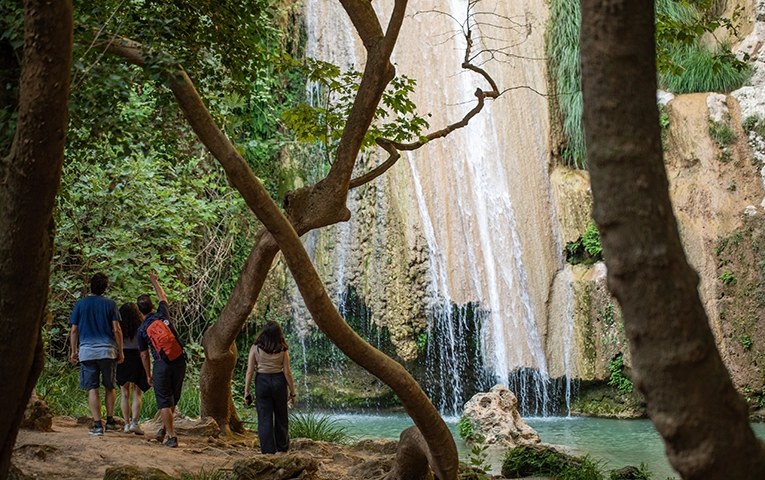
[Edited version of an article previously published at Greece-Is.com.]

